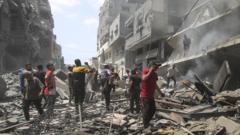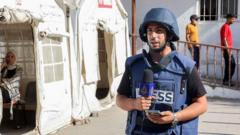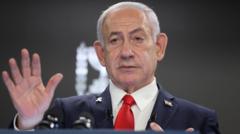In a series of escalating military strikes against Iran, Israel has achieved notable air superiority that demonstrates a shift in regional power dynamics. Reports indicate that Israeli forces have successfully targeted critical sites, including nuclear facilities and high-ranking military personnel, while significantly diminishing Iran's air defense capabilities. Prime Minister Benjamin Netanyahu described the operation, highlighting Israel's efforts to dismantle the "layers of protection" surrounding Iran’s defense structure.
**Israel's Air Superiority: A Shift in Regional Power Dynamics**

**Israel's Air Superiority: A Shift in Regional Power Dynamics**
Recent Israeli strikes on Iran reveal significant advances in military tactics and concerns over Iranian air defenses, according to officials.
Since the beginning of a strategic military campaign last year, which included two pivotal confrontations in April and October focused on Iranian air defenses, Israeli fighter jets have gained access to previously inaccessible parts of Iranian airspace. Netanyahu, during a recent interview, emphasized Israel's progress in establishing a near-dominance in Iranian skies, stating, "We have peeled off the layers of protection." Meanwhile, official sources from the Israeli military stress that, while Iran's security framework has been disrupted, some defense systems remain operational, requiring careful navigation by Israeli aircraft.
The assaults have reportedly resulted in the deaths of over 120 individuals, including civilians and prominent military figures. The precarious situation has prompted discussions among Iranian officials regarding their defense inefficiencies, with some questioning, “Where is our air defense?” and expressing frustration over the apparent inability to prevent Israeli assaults. This acknowledgment of vulnerabilities highlights significant challenges faced by the Iranian military in managing their territorial integrity against external threats.
Former military leaders suggest that Israel's newfound ability to conduct air strikes with relative ease symbolizes a dramatic escalation in military capabilities and strategy. This ongoing conflict may not only reshape Israel's strategic posture but also influence regional alliances and security arrangements in the Middle East, as the implications of these strikes continue to unfold.
As the situation progresses, analysts and officials from both Israel and Iran are left to contemplate the long-term ramifications of this military engagement on broader geopolitical relations in the region.
The evolving nature of this conflict underscores the complexities of Middle Eastern politics and the ever-changing dynamics of military power in the area.
The assaults have reportedly resulted in the deaths of over 120 individuals, including civilians and prominent military figures. The precarious situation has prompted discussions among Iranian officials regarding their defense inefficiencies, with some questioning, “Where is our air defense?” and expressing frustration over the apparent inability to prevent Israeli assaults. This acknowledgment of vulnerabilities highlights significant challenges faced by the Iranian military in managing their territorial integrity against external threats.
Former military leaders suggest that Israel's newfound ability to conduct air strikes with relative ease symbolizes a dramatic escalation in military capabilities and strategy. This ongoing conflict may not only reshape Israel's strategic posture but also influence regional alliances and security arrangements in the Middle East, as the implications of these strikes continue to unfold.
As the situation progresses, analysts and officials from both Israel and Iran are left to contemplate the long-term ramifications of this military engagement on broader geopolitical relations in the region.
The evolving nature of this conflict underscores the complexities of Middle Eastern politics and the ever-changing dynamics of military power in the area.



















